目次
- 1 Tokyo Election 2025: LDP’s Historic Defeat Reshapes Japan
- 1.1 Election Results Analysis: Winners and Losers
- 1.2 LDP’s Structural Collapse: “Bottomless Distrust”
- 1.3 Tomin First: The Power of the “Koike Brand” and Its Challenges
- 1.4 Mixed Fortunes for New Forces: DPP’s Breakthrough and Ishin/Saisei’s Failures
- 1.5 District-by-District Analysis: Battleground Dynamics
- 1.6 Changing Voting Behavior: SNS and Youth Political Participation
- 1.7 Tokyo’s Digitalization and Electoral Reform Trends
- 1.8 National Political Implications: Upper House Election and Potential Realignment
- 1.9 Voter Priorities and Policy Concerns
- 1.10 Media’s Role and “Hostile Media Perception”
- 1.11 Concerns About Xenophobic Rhetoric
- 1.12 Conclusion: Japan’s Political Turning Point
Tokyo Election 2025: LDP’s Historic Defeat Reshapes Japan
The Tokyo Metropolitan Assembly election held on June 22, 2025, marked a dramatic turning point in Japanese politics. The Liberal Democratic Party (LDP) suffered a historic defeat, securing only 21 seats—its worst performance ever. Meanwhile, Tomin First no Kai (Tokyo Citizens First) reclaimed the top position with 31 seats. This “election without winners” carries significant implications as a precursor to the July 20 House of Councillors election, occurring in the rare cycle when both elections fall in the same year—a phenomenon that happens only once every 12 years.
Election Results Analysis: Winners and Losers
Voter turnout reached 47.59%, up 5.2 points from the previous election’s 42.39% in 2021. Despite this increase, distrust in established parties remained deep, resulting in the following seat distribution:
Final Seat Count
- Tomin First no Kai: 31 seats (regained top position)
- Liberal Democratic Party (LDP): 21 seats (historic low)
- Komeito: 19 seats (down from 23, breaking their winning streak)
- Constitutional Democratic Party (CDP): 17 seats (increased)
- Japanese Communist Party (JCP): 14 seats (decreased)
- Democratic Party for the People (DPP): 9 seats (first-ever Tokyo assembly seats)
- Sanseito: 3 seats (first-time entry)
- Japan Innovation Party (Ishin): 0 seats (all candidates lost)
- Saisei no Michi (Path of Renewal): 0 seats (all 42 candidates lost)
Notably, the number of young assembly members doubled, with 5 members in their 20s and 22 in their 30s elected, signaling voters’ strong demand for generational change.
LDP’s Structural Collapse: “Bottomless Distrust”
The LDP’s historic defeat stems from multiple interconnected factors, with the “politics and money” scandal being paramount. Over 60% of voters reported considering this issue when casting their ballots, prompting party insiders to describe public distrust as a “bottomless pit.”
1. Complete Alienation of Independent Voters
According to ANN exit polls, the LDP secured only half of its traditional support base, with nearly 20% defecting to Tomin First. Independent voters overwhelmingly rejected the LDP, a trend expected to continue in the Upper House election.
Related article: Ishiba Cabinet Approval Ratings and 2025 Upper House Election Outlook
2. Unexpected Decline in Elderly Voter Turnout
Voter turnout among those in their 70s dropped by 16.06 points compared to the previous election, significantly lowering overall participation. COVID-19 concerns likely deterred many elderly voters, undermining what has traditionally been the LDP’s most reliable support base.
3. Backfire of Ishiba’s “20,000 Yen Handout”
Prime Minister Shigeru Ishiba’s announcement of a “20,000 yen cash handout” as part of the Upper House election manifesto on nomination day was intended to boost support in the Tokyo election. However, some party executives criticized it as “unnecessary cash distribution.” Ishiba’s cabinet approval ratings had already hit record lows, with five of eight media polls showing the worst numbers and three reporting ratings in the 20% range.
Related article: The Truth Behind the 20,000 Yen Handout Policy and Inequality Issues
Tomin First: The Power of the “Koike Brand” and Its Challenges
Tomin First no Kai, the regional party where Tokyo Governor Yuriko Koike serves as special advisor, campaigned under the banner of “Tokyo Major Reform.” Their victory resulted from multiple factors.
The “Koike Stealth Support” Effect
Governor Koike actively campaigned for candidates in contested districts during the election’s final phase. Young LDP members commented that “this wasn’t an LDP defeat but Koike’s personal victory.” Indeed, Koike’s supporters showed strong loyalty to Tomin First candidates.
Successful SNS Strategy
Tomin First utilized SNS videos portraying Governor Koike as Tokyo’s “stepmother,” highlighting her administration’s achievements. They overcame their previous image of being “poor at self-promotion” by establishing an SNS team that far exceeded video posting targets.
Concrete Policy Proposals
Tomin First campaigned on the following principles and policies:
- Three Core Principles: “Tokyo Citizens First,” “Information Disclosure,” “Wise Spending”
- Assembly Reform: Smoking ban in assembly buildings, prohibition of dining with political funds, mandatory online disclosure, abolition of official assembly cars, prevention of improper influence, digitalization of proceedings
- Childcare Support: Accelerated measures against waiting lists, securing childcare workers and improving their treatment, ICT promotion
- Elderly Care: Comprehensive community care systems, improved treatment for care workers, extending healthy life expectancy
- Smart City: Revival of international financial markets, attracting foreign companies, startup support
- Environment and Energy: Energy conservation including LED bulb replacement, renewable energy measures
- Support for Tama and Island Regions: Eliminating the “Tama gap,” enhancing municipal grant funds
Representative Takayuki Morimura stated that while relations with the LDP and Komeito won’t change significantly, they will continue positive relationships with the DPP through policy consultations and study sessions.
Mixed Fortunes for New Forces: DPP’s Breakthrough and Ishin/Saisei’s Failures
Democratic Party for the People: “Increase Take-Home Pay” Wins First Seats
The DPP, seen as a “dark horse,” secured its first-ever 9 seats in the Tokyo assembly. They maintained momentum from quadrupling their seats in the October 2024 general election through skillful SNS campaigning. Party leader Yuichiro Tamaki had aimed for 11 seats—enough to independently submit ordinances—but fell short.
However, criticism over Tamaki’s “animal feed” comment regarding emergency rice reserves and confusion over Shiori Yamao’s Upper House candidacy created internal anxiety. Still, executives expressed confidence, saying “Last time nobody paid attention to us, but now we’re one of the options people consider.”
Japan Innovation Party: Complete Defeat in Tokyo
Ishin’s complete failure, with all candidates losing, reflected Tokyo voters’ distrust of their political stance. This exposed their lack of momentum outside the Kansai region, with repeated scandals contributing to voter dissatisfaction.
Ishimaru’s “Path of Renewal”: The Gap Between Ideals and Reality
The “Path of Renewal” (Saisei no Michi), established by former Akitakata City Mayor Shinjiro Ishimaru, fielded 42 candidates but won no seats. Despite Ishimaru finishing second in the 2024 Tokyo gubernatorial election, his personal popularity didn’t translate into organizational votes.
Ishimaru stated that winning seats wasn’t the goal, instead promoting these ideals:
- Encouraging politically uninvolved people to participate and then smoothly exit
- Term limits of “two terms, eight years maximum”
- Making assembly positions a career change or advancement option (33% of voters supported this)
However, the concept of “dual representation system” proved too abstract for voters compared to other parties’ concrete proposals for addressing inflation. Running multiple candidates in single districts like Shinjuku and Suginami split the vote. The result was deemed “naive.”
Sanseito: New Conservative Outlet
Sanseito won 3 seats, representing a breakthrough. This reflects criticism of extreme political views and expectations for new political alternatives. Some analysts suggest that portions of LDP and DPP supporters shifted to Sanseito, attracted by their explicit anti-foreigner rhetoric that resonated with voters feeling “someone finally said it.”
District-by-District Analysis: Battleground Dynamics
Each electoral district saw diverse battles unfold. Key contested districts included:
Nerima Ward (7 seats)
CDP incumbent Fujii and LDP incumbent Shibasaki led, with Komeito incumbent Kobayashi and Tomin First incumbent Ojima in tight competition. Many independent voters remained undecided until the end.
Koto Ward (4 seats)
Independent incumbent Mito held a slight lead, followed by Tomin First incumbent Shirato. Over half of voters remained undecided. The district attracted attention due to the history of convicted Diet members including Tsukasa Akimoto (IR bribery) and Mitsuhiro Kakizawa (election law violations).
Shinagawa Ward (4 seats)
The top seven candidates remained in fierce competition, with independent voters’ support widely dispersed.
Ome City
Tomin First representative Takayuki Morimura demonstrated remarkable vote-getting ability by attracting even LDP supporters. Having completed two terms, he secured a solid victory for his third term.
Machida City
DPP momentum stalled while Tomin First gained ground. An LDP candidate with an unusual background as a former professional soccer player showed surprising strength.
Ota Ward
Attention focused on “money politics” candidates, including Akihiro Suzuki (denied LDP endorsement) and independent Ai Mori, who had criticized LDP’s money scandals but was revealed to have unreported donations herself.
Changing Voting Behavior: SNS and Youth Political Participation
This Tokyo election revealed significant changes in voting behavior, with SNS influence particularly prominent.
Age-Based Turnout Characteristics
- 18-year-olds: Turnout similar to overall average
- 19 and older: Declining turnout, lowest in early 20s
- 70s: Dramatic 16.06-point drop from previous election (COVID concerns)
Young voter turnout decline stems mainly from reduced civic education and voting encouragement after high school graduation, plus inability to vote at current addresses due to unchanged resident registrations.
SNS Influence: Accelerating “Media Shift”
About half of young people obtain political information through SNS, with half of Ishimaru’s supporters citing YouTube as influential in their decision. This demonstrates a clear “media shift” from traditional “four mass media” outlets.
The DPP also leveraged SNS to reach voters in real-time and conduct low-cost campaigns. Direct dialogue between candidates and voters became possible, boosting young voter engagement.
The Misinformation Problem
However, problems also emerged. During the election, false information spread on SNS including:
- “Pencil marks on ballots can be altered”
- Misinformation about foreign crime in Kawaguchi City
- “Taxes will increase to fund the 20,000 yen handout” (actually funded by tax revenue surplus)
While the Japan Fact Check Center (JFC) and others work on fact-checking, over half of young people find political information on SNS “hard to trust,” making information credibility a key challenge.
Tokyo’s Digitalization and Electoral Reform Trends
Tokyo has implemented the “Tokyo Digital First Ordinance,” aiming for paperless administrative procedures by default, which also affects election management.
Digitalization Progress
- Approximately 28,000 procedures targeted for digitalization
- Goal of 70% online conversion by fiscal 2023
- 44 operations streamlined through RPA utilization
- Urban OS construction for smart city realization
Improving Voting Environment
The Tokyo Election Commission has implemented various initiatives to boost turnout:
- SNS and web video campaigns featuring Minami Hamabe as image character
- Dialogue videos with popular YouTubers and models
- Smartphone education programs for elderly (approximately 750 classes)
- Reasonable accommodations for disabled voters (improved websites, communication support)
- Consideration for sexual minorities (removing gender from voting admission tickets)
Internet Voting Possibilities
The Ministry of Internal Affairs is conducting pilot programs for overseas voting, with Tokyo participating. While Estonia has seen high usage among young voters, challenges remain in system stability, security, identity verification, and ballot secrecy.
National Political Implications: Upper House Election and Potential Realignment
This Tokyo election, positioned as a “preliminary round” for July’s Upper House election, will certainly have major national political impacts.
Ishiba Administration’s Crisis
The Ishiba cabinet’s approval ratings have reached critical levels:
- Record lows in 5 of 8 media polls
- Ratings in the 20% range confirmed by 3 outlets
- “Aoki ratio” (cabinet approval + LDP approval) predicted to fall below danger zone
Potential timing for Ishiba’s departure includes:
- In exchange for passing next fiscal year’s budget (March-April)
- End of Diet session (June)
- After Upper House election
However, if the ruling coalition maintains its Upper House majority, Ishiba reportedly has no intention of resigning.
Related article: 2025 Upper House Election Party Analysis
Political Realignment Scenarios
DPP leader Yuichiro Tamaki stated that “after the Upper House election, we may see historic changes in Japanese politics not seen for decades,” suggesting the possibility of new power-sharing arrangements with 3-5 parties cooperating in government.
Several factors make political realignment realistic:
- Continued minority government in the Lower House
- Necessity of cooperation with some opposition parties
- Internal CDP conflicts over consumption tax cuts (former leader Yukio Edano: “If you want tax-cut populism, create a different party”)
- LDP expectations for a “new leader to destroy the old LDP”
Related article: Finance Committee and Gasoline Tax Confrontation
“Post-Ishiba” Movements
Movements within the LDP regarding Ishiba’s successor are already active:
- Chief Cabinet Secretary Yoshimasa Hayashi: Policy-savvy and versatile but may seem like an extension of the Ishiba administration
- Finance Minister Katsunobu Kato: Well-positioned to gain factional support
- Sanae Takaichi: Would be Japan’s first female prime minister but her conservative policies might alienate centrists
Voter Priorities and Policy Concerns
Voters in this Tokyo election prioritized the following policies and selection criteria:
Top Policy Concerns (Multiple Responses)
- Inflation countermeasures: 70.2% (overwhelming first place)
- Politics and money issues: 40.2%
- Economic revitalization, industrial promotion: 39.4%
- Healthcare, nursing, welfare: approximately 30%
- Employment and wages: approximately 30%
Candidate Selection Criteria
- Manifestos and policies: 63.0% (most important)
- Track record and career: 34.9%
- Politician’s character and trustworthiness: about 70% of young voters focus on this
- Clean image regarding money
- No connection to established parties
Notably, female candidates showed overwhelming strength, with voters increasingly considering gender as a voting criterion.
Media’s Role and “Hostile Media Perception”
This election highlighted both the media’s role and its challenges.
The “Information Vacuum” Problem
In the 2024 gubernatorial election, there was a significant gap between the media’s assumed “two-way race between Koike and Renho” and voters’ actual recognition of Ishimaru’s surge. TV stations’ election coverage, constrained by broadcasting laws, has extended “self-regulation” to the internet, creating disconnects with viewer needs and “information vacuums.”
Accelerating Media Distrust
“Hostile media perception” is accelerating, with people viewing media reports contradicting their opinions as biased. As voter distrust in mass media intensifies, the importance of accurate, fact-based journalism is emphasized.
Fact-Checking Initiatives
The Asahi Shimbun, Mainichi Shimbun, and Japan Fact Check Center (JFC) have strengthened fact-checking efforts. Media bears responsibility for verifying facts and providing accurate information rather than relying on impressions, such as comparing data on foreign medical expenses.
Concerns About Xenophobic Rhetoric
Some parties, particularly Sanseito, explicitly promoted anti-foreigner rhetoric that resonated with voters who felt “someone finally said it.” Such rhetoric appeals to those feeling a sense of “deprivation” that Japanese people’s lives are being harmed. What was previously limited to anonymous online forums is now connecting with real politics, raising concerns.
Conclusion: Japan’s Political Turning Point
The 2025 Tokyo Metropolitan Assembly election potentially marks a turning point in Japanese politics through:
- Deep-rooted distrust of established parties manifested in the LDP’s historic defeat
- SNS-driven “media shift” fundamentally changing campaign strategies
- Concentration of support for young and female candidates showing strong demands for generational change
- Mixed results for emerging parties reflecting voters’ complex psychology
- Turnout changes indicating fluidity in traditional support bases
If the ruling coalition loses its Upper House majority in July, the LDP’s fall from power and a change of government become suddenly realistic. Even maintaining a majority means difficult Diet management as a minority government, making coalition reshuffling or political realignment inevitable.
Voters have delivered not mere criticism of the government but a demand for renewal of Japanese democracy itself. Anger over “politics and money” issues, delayed responses to inflation, and above all, disappointment with established parties resistant to change clearly manifested in voting behavior.
While LDP voices say “we must send a message that we’re becoming a different party,” fundamental reform rather than mere rebranding is clearly required. Whether they can select a “new leader to destroy the old LDP” in September’s presidential election becomes crucial.
This Tokyo election demonstrates that Japanese democracy has entered a new phase. How parties and politicians respond to changing voter consciousness remains to be seen. As attention focuses on the Upper House election and subsequent political developments, warnings about a potential “second Ishiba shock” disrupting markets have emerged.
Japanese politics may now be facing its greatest postwar turning point.
References:
Political Video Media | FNN Prime Online | Minna no Keizai Shimbun | TBS NEWS DIG | KSB Setonaikai Broadcasting | Go2Senkyo.com | Jiji.com
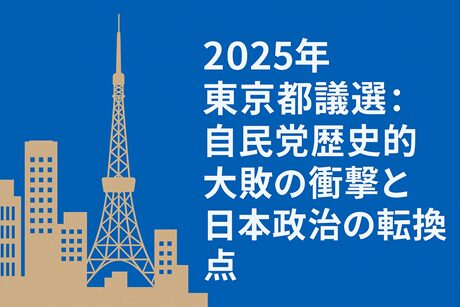



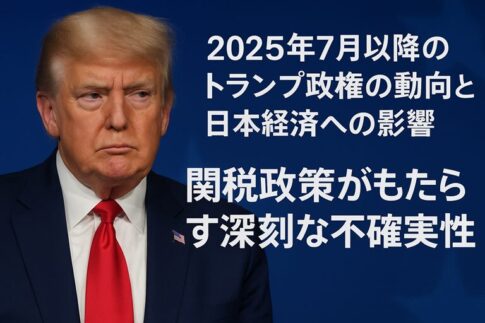
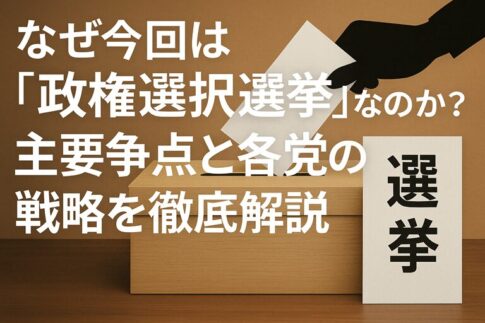
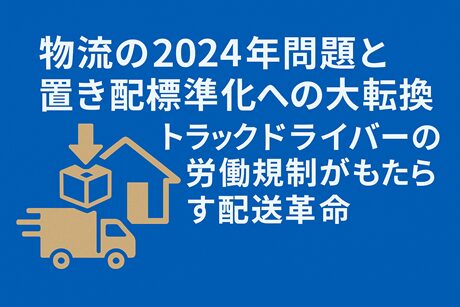
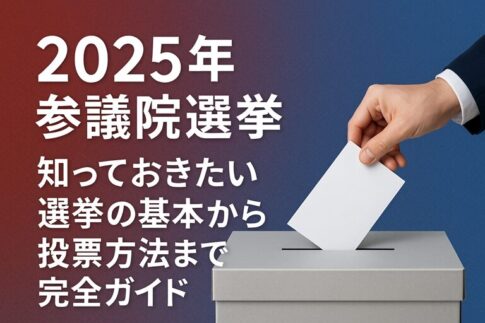
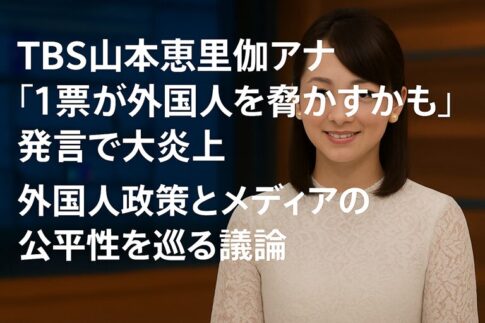

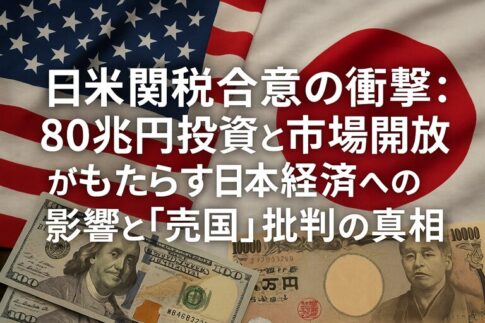



Leave a Reply